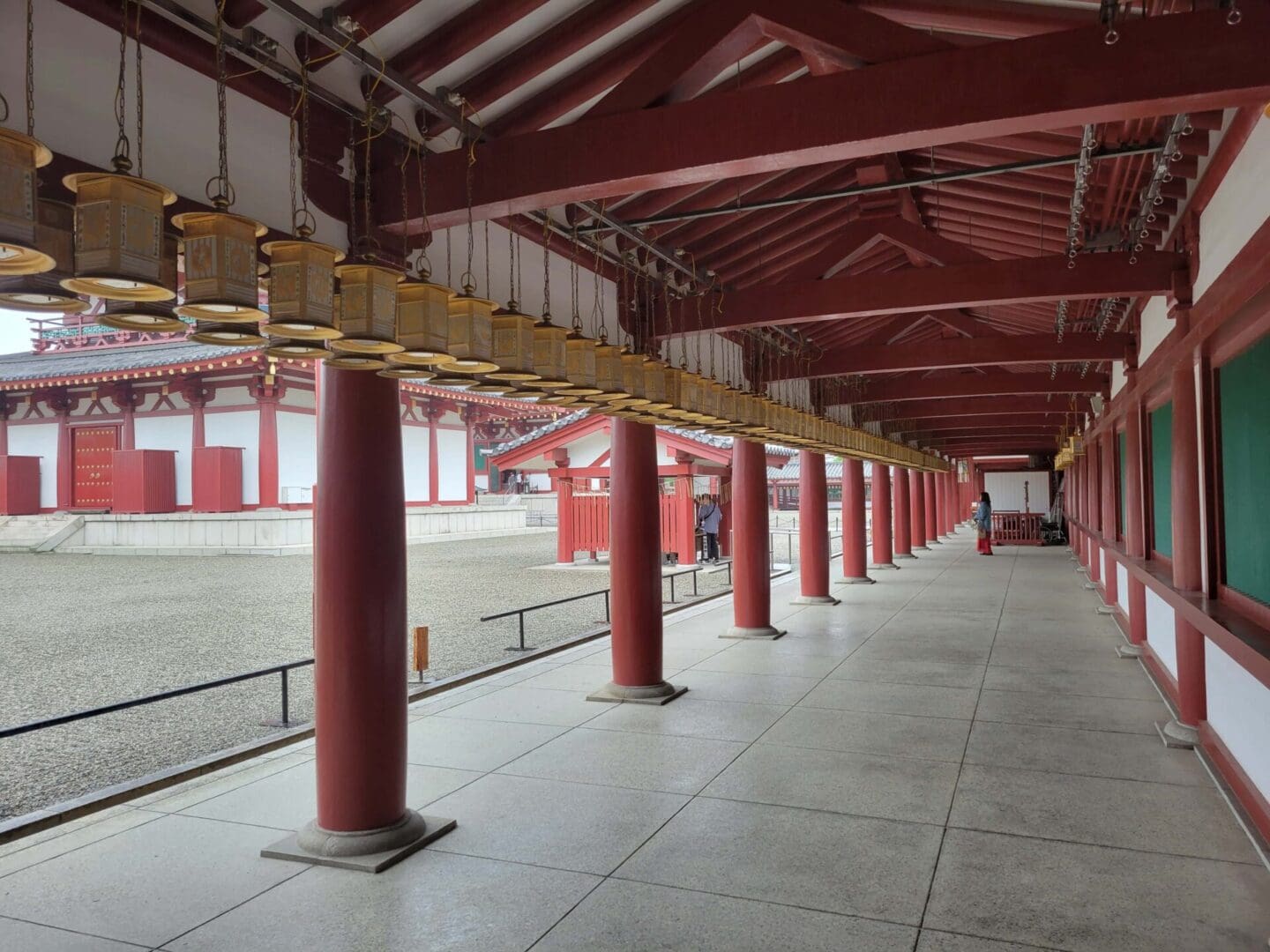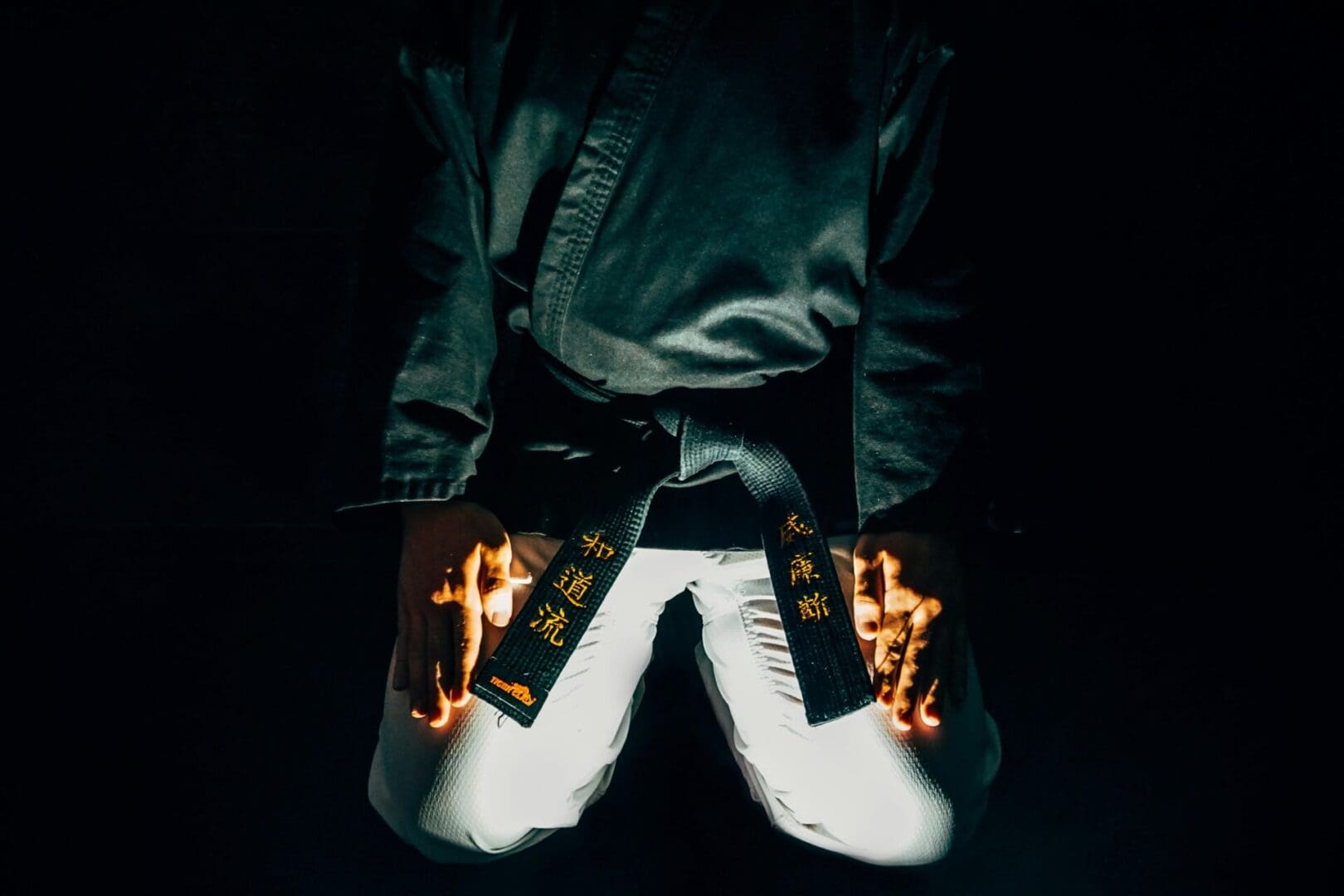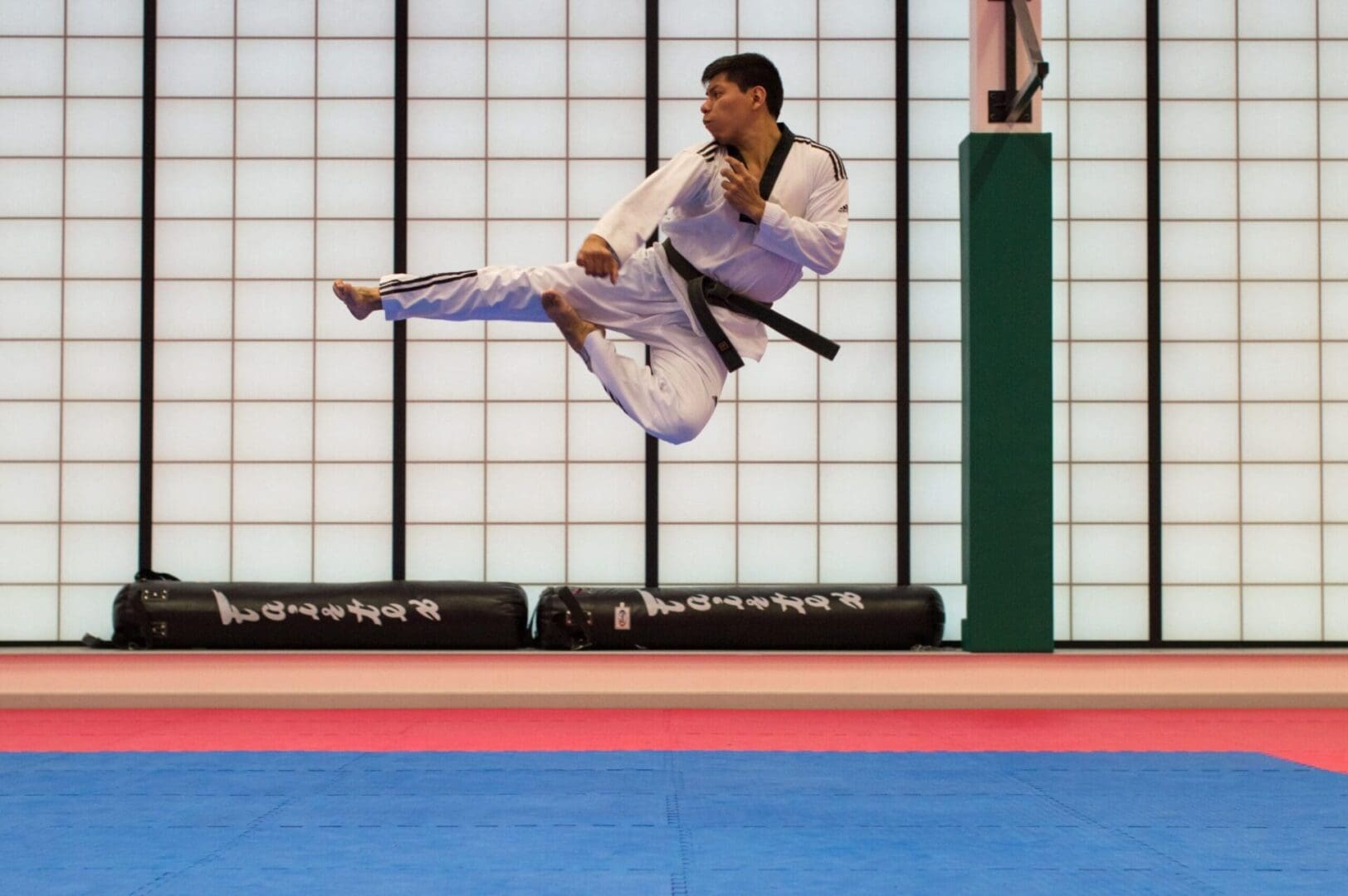Our Journey To Japan
Our journey through Japan was a remarkable adventure filled with cultural immersion, personal discovery, and unforgettable experiences. Over eight days, we explored the distinct contrasts between Japanese culture and our own, delving into the heart of Tokyo, Kyoto, and Osaka. Each day offered a new chapter in our exploration, from the bustling streets of Shibuya and Akihabara to the serene beauty of Kyoto’s shrines and the historical grandeur of Osaka Castle. This travelogue captures the essence of our trip, detailing our encounters with traditional practices, modern marvels, and the everyday kindness of the people we met along the way. Join us as we recount our experiences and the profound insights gained during our stay in Japan.
Contents:
- The Differences Between Their Culture and Ours
- Day One
- Day Two
- Day Three
- Day Four
- Day Five
- Day Six
- Day Seven
- Day Eight
The Main Differences Between Their Culture and Ours:
Japan’s culture presents a unique blend of customs and societal norms that stand in stark contrast to those found in our own country. This section explores three key aspects of Japanese culture: the ubiquitous use of umbrellas, the deeply ingrained ethos of kindness, and the atmosphere of personal immersion and collective harmony.
Umbrellas:
In Japan, a country renowned for its frequent and gentle rains, umbrellas are not merely practical accessories but essential companions in daily life. The omnipresence of rain means that an umbrella is a must-have in every individual’s collection, an indispensable tool against the whims of weather. However, beyond their utility, umbrellas contribute to a uniquely beautiful and poetic sight. Imagine the scene: as the first drop of rain descends from the sky, a ripple of movement spreads through the crowd. In a moment of silent synchronisation, countless umbrellas spring open, unfurling like a vast field of blossoms. The vibrant colours and varied patterns of these umbrellas create a living mosaic, transforming the urban landscape into a transient garden of delicate petals. This spontaneous choreography, where each person moves in harmony with the others, is a testament to the subtle beauty found in everyday moments. The sight of so many people, unified under their umbrellas, is a spectacular and moving spectacle, a vivid reminder of the shared experiences that connect us all.
Kindness:
Embedded deeply within the cultural fabric of Japan is an enduring ethos of kindness and consideration. This cultural inclination towards politeness extends even to moments of error or misunderstanding, ensuring that even when mistakes are made, they are met with grace and understanding. Yet, beyond this customary politeness, there is a genuine warmth that shines through in everyday interactions. Imagine the experience of approaching a resident to ask for directions in Japanese or to compliment their hairstyle. The smiles that light up their faces in response are truly remarkable. These smiles are not just polite gestures but are imbued with genuine happiness and appreciation. They reflect a heartfelt recognition of your efforts to engage with their language and culture. This authentic joy at a foreigner’s attempt to understand and appreciate their way of life is profoundly moving. It serves as a beautiful reminder of the human connection that transcends cultural boundaries, a silent yet powerful acknowledgement of mutual respect and the universal language of kindness.
The Atmosphere (everyone seems to be immersed in their own life):
In the UK, I often find myself preoccupied with thoughts of how others perceive me, constantly wondering if people are looking at me and scrutinising my every move. This pervasive sense of being watched, whether real or imagined, creates an ongoing undercurrent of self-consciousness. However, when I am in Japan, this sensation seems to dissipate, replaced by a comforting sense of anonymity. Perhaps it is the fact that no one knows me personally, but I feel liberated from the gaze that I experience elsewhere. In Japan, there is a palpable sense that people are deeply immersed in their own lives, focused on their journeys and aspirations. There is an admirable dedication to self-improvement and a collective drive to achieve greater heights, which seems to occupy the minds and energies of the people around me. This environment fosters a unique sense of freedom, allowing me to navigate public spaces without the weight of judgment. In Japan, I feel an unspoken understanding that everyone is engaged in their endeavours, creating a respectful and unobtrusive atmosphere where I can simply be myself. This cultural milieu, where personal ambition and collective harmony coexist, provides a refreshing respite from the constant self-awareness I experience elsewhere, offering a serene and accepting space to exist without the fear of being judged.
Our Layover In Shanghai:
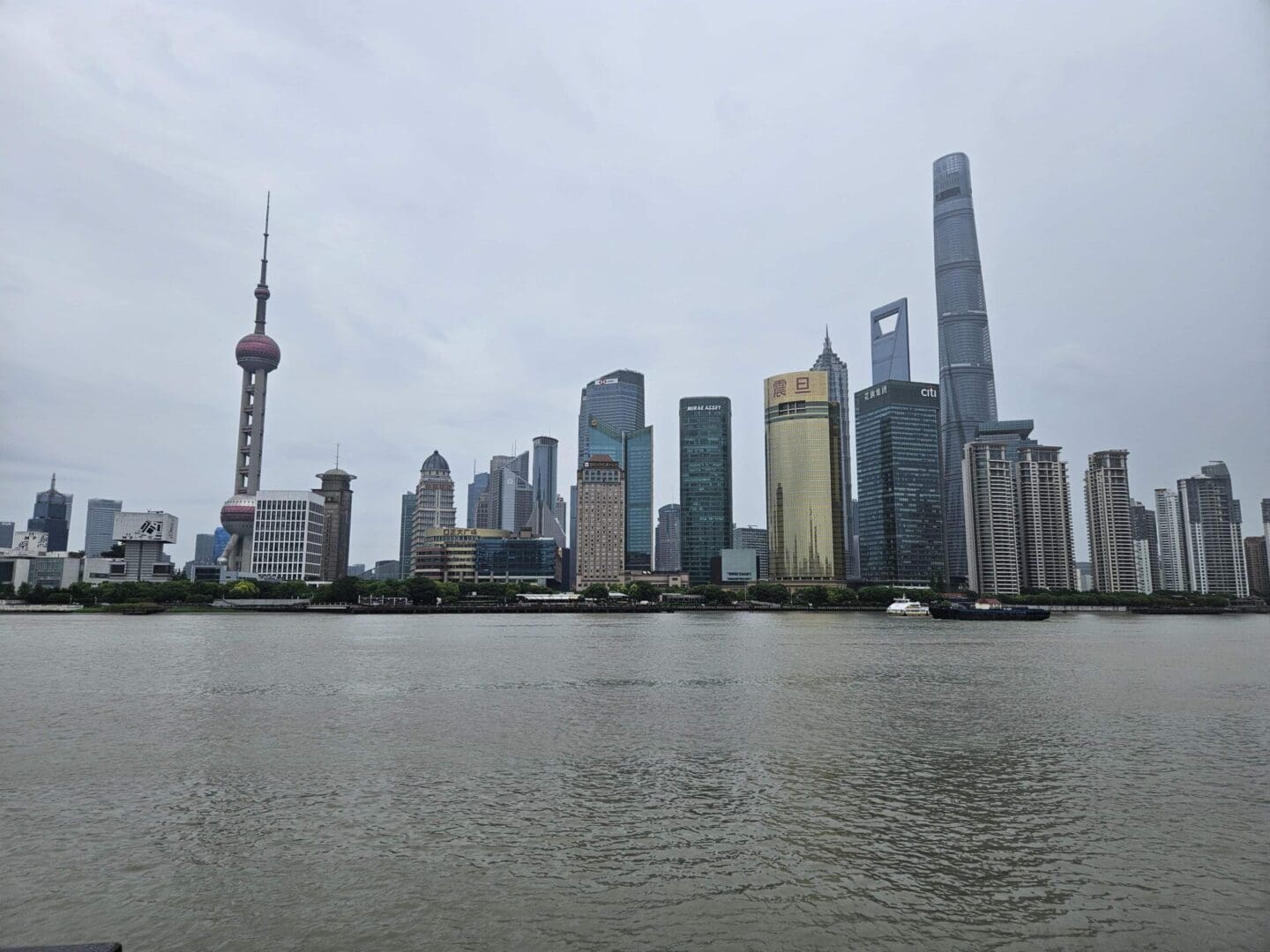
We explored the heart of Shanghai, marvelling at the city’s iconic skyline. The skyscrapers stood tall and majestic, each a masterpiece of modern architecture. Their sleek glass facades reflected the sunlight, creating a dazzling display of colours and lights that seemed to dance across the sky. The intricate designs and innovative structures showcased cutting-edge engineering and futuristic vision, making the skyline not just a collection of buildings but a symbol of progress and ambition.
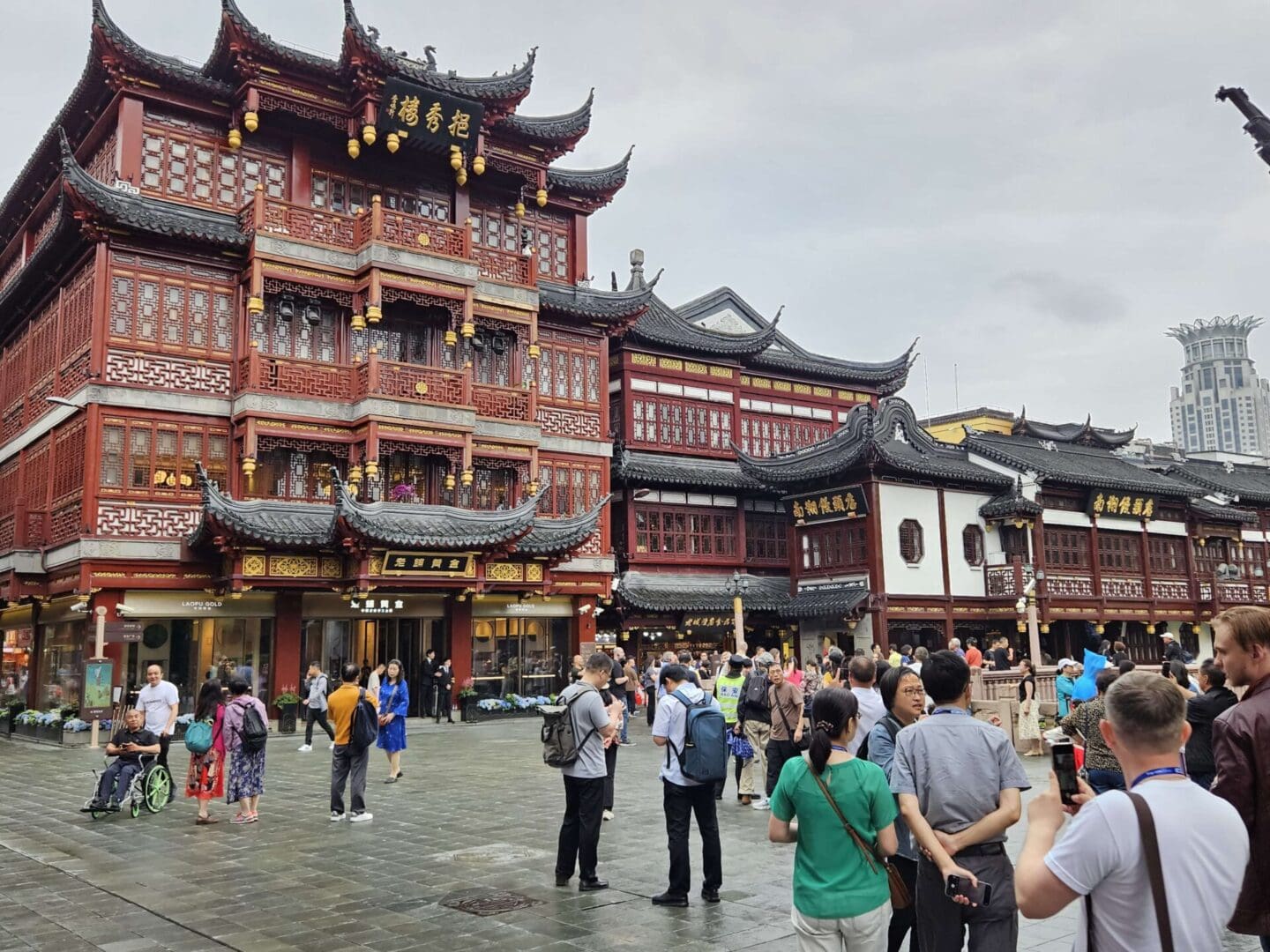
Contrasting this modern marvel, we also visited repurposed traditional buildings, which offered a fascinating glimpse into Shanghai’s rich history. These historical structures, once ancient temples, old warehouses, and colonial-era residences, have been beautifully restored and transformed into trendy boutiques, cosy cafes, and vibrant cultural spaces. The blend of old and new was captivating, as traditional Chinese architectural elements like wooden beams, intricate carvings, and classic red lanterns were seamlessly integrated with contemporary interiors and modern amenities.
This juxtaposition of towering skyscrapers and elegantly repurposed traditional buildings highlighted Shanghai’s unique charm. It was a testament to the city’s ability to honour its past while embracing the future, creating a dynamic and visually stunning urban landscape that left us in awe. The experience of witnessing such diverse architectural styles coexisting harmoniously was truly a testament to the city’s creative spirit and innovative soul.
Day One (Monday):
Travel:
Most of the first day of our holiday was consumed by the journey from London to China, where we had a layover, before finally reaching Japan. Our long hours of travel culminated in our arrival in Japan at 21:30 local time. With the majority of the day already behind us, we made the pragmatic decision to focus on settling in. Our first task was to locate our hotel and satisfy our growing hunger. After obtaining our Suika cards, which are indispensable for navigating the city’s transportation system, we embarked on our journey to our accommodation in Tokyo. The bustling metropolis, even late at night, exuded an energy and vibrancy that was palpable. Despite our weariness from the extensive travel, the anticipation of the adventures that lay ahead infused us with a sense of excitement and wonder. As we made our way to the hotel, the streets of Tokyo, illuminated with myriad lights, offered a glimpse of the dynamic cityscape that awaited our exploration. This initial evening, though primarily dedicated to logistical necessities, marked the beginning of our immersive experience in Japan, setting the stage for the many discoveries and experiences to come.
First Impressions:
While I had just arrived in Japan, the night was alive with bright, beautiful lights that painted the city in vibrant hues. The streets were filled with people simply being themselves, couples sharing intimate moments under the neon glow, and groups of friends enjoying the lively atmosphere. Everywhere I looked, there was a sense of joy and camaraderie. The individuals we approached for help or conversation were exceptionally welcoming, displaying a politeness and patience that made us feel at ease. They exhibited a deep understanding of our efforts to navigate their language and culture, offering guidance and encouragement with genuine warmth. This level of empathy and openness created an immediate sense of connection and made our initial foray into Japanese life both comfortable and exhilarating. The night, bustling with life and illuminated by the collective spirit of the people, set a beautiful tone for our journey, filling us with anticipation for the experiences to come.
Day Two (Tuesday):
Shinkansen (Maglev Train):
Japan is renowned for its maglev trains, with the Shinkansen standing as the most iconic among them. Experiencing this marvel of engineering was a non-negotiable part of our itinerary. We eagerly booked our tickets for a 9 AM departure, which meant an early 6 AM wake-up call. With a sense of excitement, we boarded the train, ready for our three-hour journey to Kyoto. The ride itself was a visual symphony, offering a seamless blend of urban landscapes and the vast, picturesque countryside. As the train glided smoothly along the tracks, we were treated to panoramic views of bustling cities, interspersed with serene, mountainous vistas. Hidden within the dense, verdant trees, we occasionally spotted ancient shrines, their tranquillity contrasting beautifully with the swift, modern train. These glimpses of sacred sites nestled in nature added a layer of historical and spiritual richness to our journey. The experience encapsulated the harmonious coexistence of modernity and tradition that Japan so beautifully embodies, making the ride not just a mode of transportation, but a captivating and profound adventure.
Kyoto:
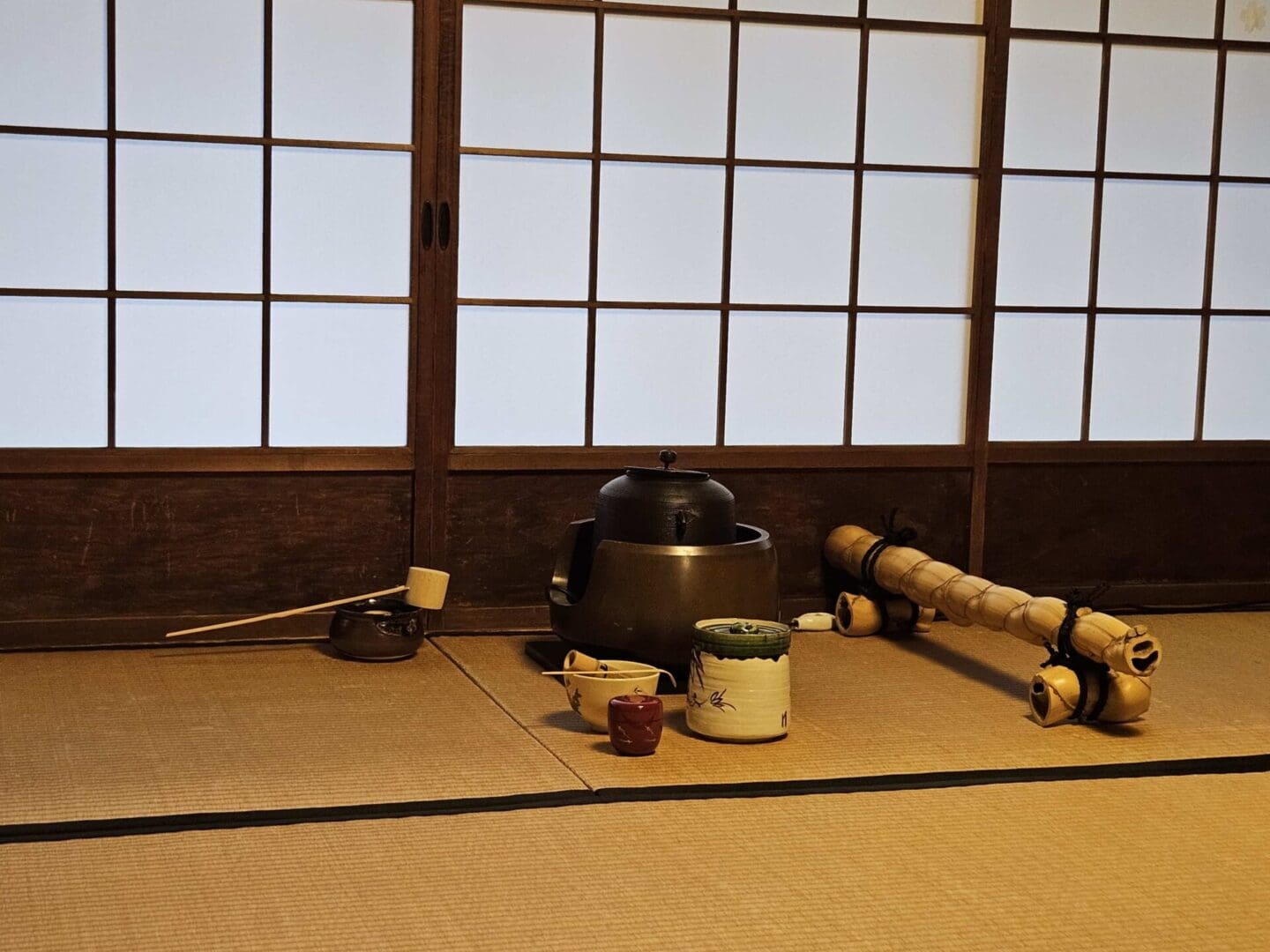
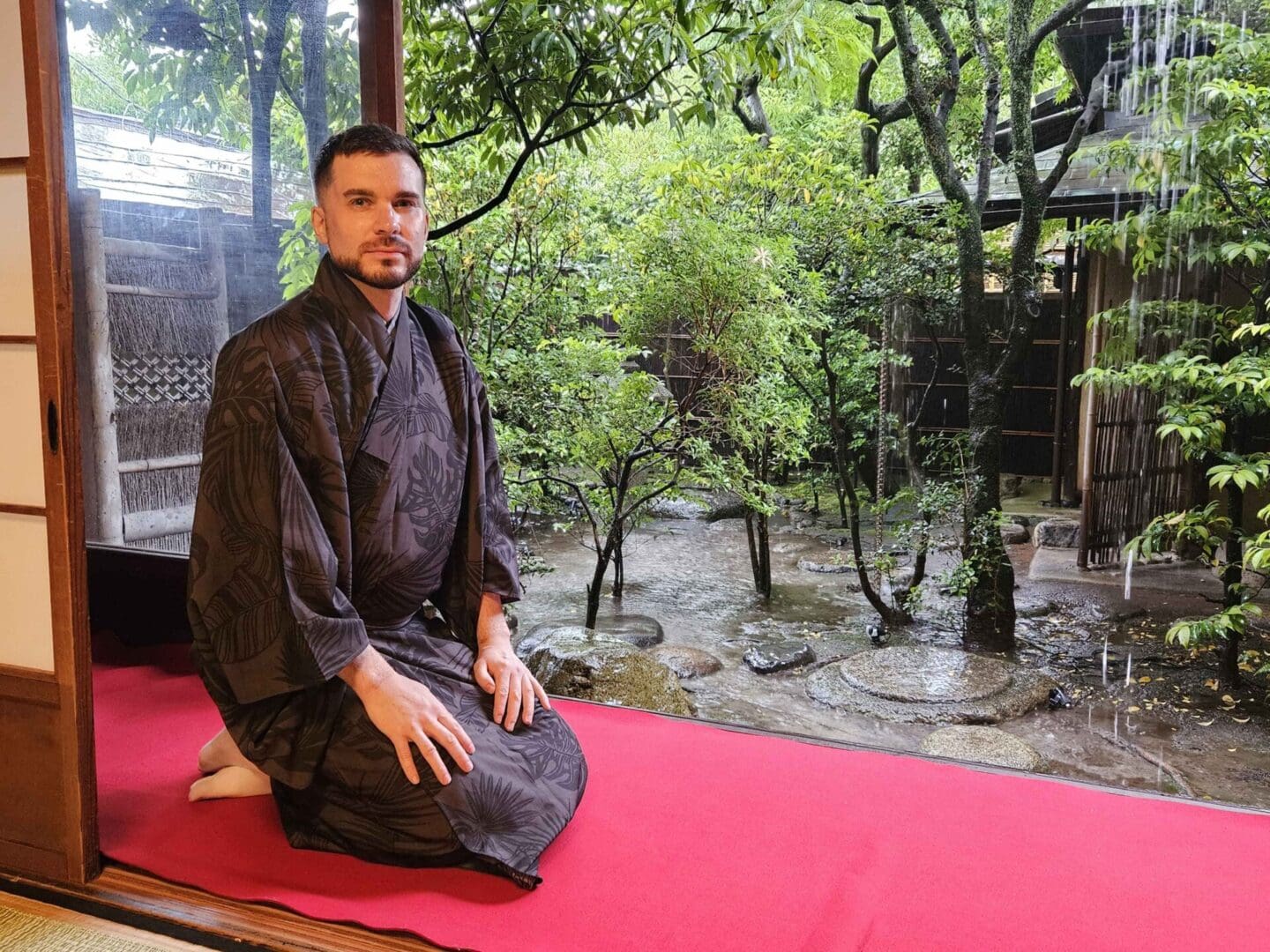
Once we arrived in Kyoto, our first stop was the Kimono rental and Tea Ceremony, an experience I had been eagerly anticipating for a long time. The allure of wearing a traditional kimono and participating in a tea ceremony, deeply connected to samurai culture, was immensely exciting. After changing into our beautiful kimonos, we began the experience by making wagashi, the traditional sweets consumed before drinking matcha. These sweets help to balance the bitterness of the matcha, enhancing the overall flavour experience.
With our wagashi prepared, we moved on to the intricate and graceful tea ceremony. We observed each step meticulously performed: from the precise cleaning of the utensils to the careful preparation and serving of the tea. This ceremony, rich in tradition and ritual, was slightly different as the Maiko encouraged us to participate actively. Instead of serving us directly, she guided us through the process of making our own matcha, allowing us to immerse ourselves fully in this ancient practice.
This hands-on approach not only taught us the art of tea preparation but also introduced us to the meditative aspects of the ceremony. It was a beautiful blend of cultural education and personal engagement, offering a serene moment of reflection amidst the rich traditions of Japan. Embracing the ritual of tea preparation and understanding its meditative qualities added profound depth to the experience, making it not just an activity, but a meaningful journey into the heart of Japanese culture.
The next stop on our journey was a Tatami mat-cutting experience, an activity I had been eagerly awaiting. Cutting tatami mats has long been on my bucket list, something I’ve always been fascinated by and loved watching. For me, this practice embodies the results of one’s efforts in a meditative yet strikingly visible way.
We began with a lesson on the proper stance to take, ensuring that our posture was correct for the task ahead. Following this, we were guided through the technique of the cut in slow motion, allowing us to grasp the precision and control required. Then came the moment we had been anticipating: the actual cutting.
As we took our turns, the experience was both exhilarating and deeply satisfying. The sharpness of the blade against the mat, the focus required, and the clear, immediate feedback of a successful cut made the activity profoundly engaging. It was a unique blend of physical action and mental concentration, showcasing the tangible results of disciplined practice.
Here is a video of me and my dad cutting the tatami mats, capturing this memorable and fulfilling experience:
Day Three (Wednesday):
Kyoto – Shrine:

As part of my self-discovery journey, there was one essential experience I knew I had to embrace in Japan: visiting a Jinja (shrine). The allure of these sacred sites has always captivated me, from their exquisite architecture to the serene atmosphere that envelops them. The tranquillity and quietude of a shrine create an environment that feels inherently conducive to self-reflection and inner peace.
Stepping into a Jinja, I was immediately struck by the harmonious blend of nature and human craftsmanship. The meticulously designed structures, often framed by lush greenery, exude a timeless beauty that invites contemplation. The soft rustle of leaves, the gentle trickle of water from a nearby stream, and the subtle scent of incense combine to create a sensory tapestry that calms the mind and soothes the spirit.
For me, visiting a shrine is more than just a cultural activity; it is a deeply personal ritual. It offers a space where I can pause, breathe, and connect with my inner self. The peaceful surroundings foster a sense of clarity and introspection, making it an ideal place for meditative reflection. The spiritual ambience, steeped in centuries of tradition, imbues each visit with a profound sense of purpose and meaning.
In this sacred space, the distractions of daily life fall away, allowing me to focus on my journey of self-discovery with renewed clarity and intention. The shrine’s tranquil environment serves as a sanctuary for the soul, providing a perfect setting to ponder life’s deeper questions and to find a sense of peace within.
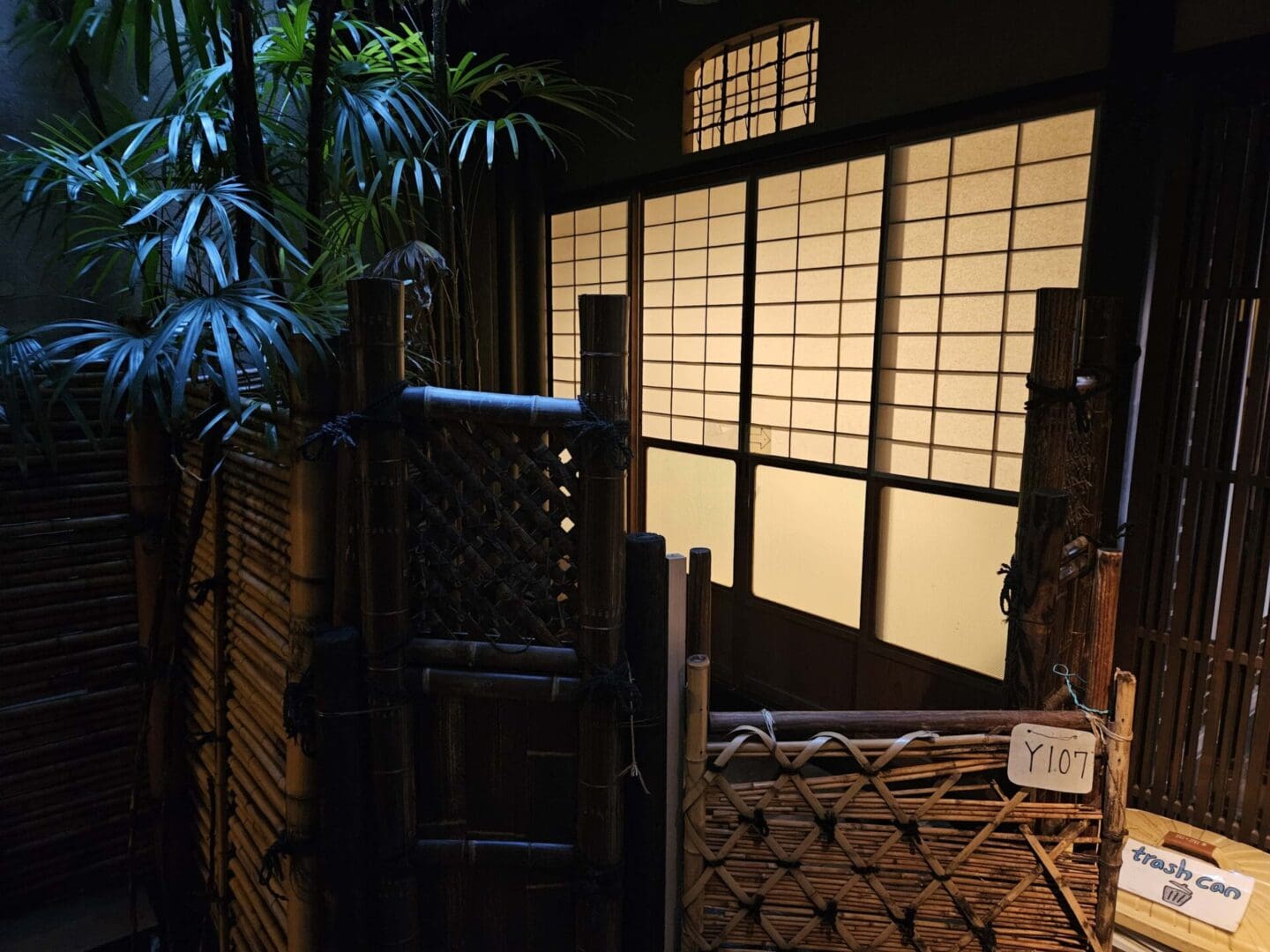
That concluded our adventures in Kyoto, ticking off everything on our itinerary. Our next destination was Osaka, so we boarded a train and headed towards the next chapter of our spectacular journey.
Osaka – Ninja Experience:
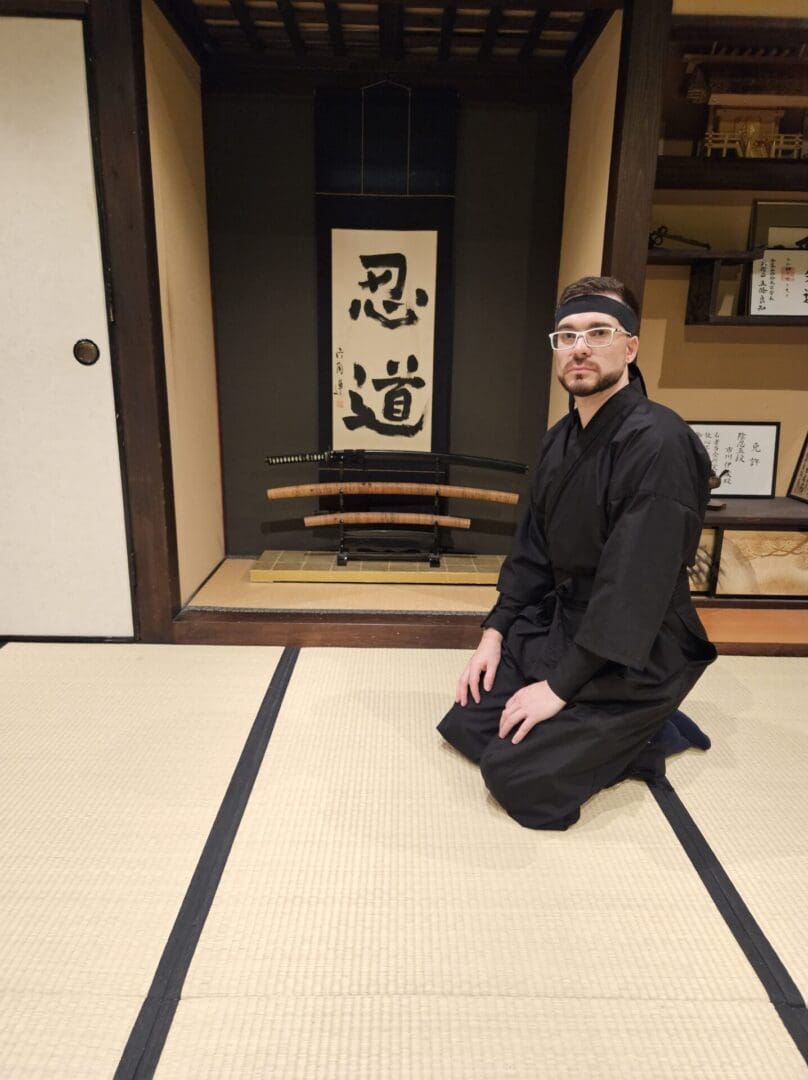
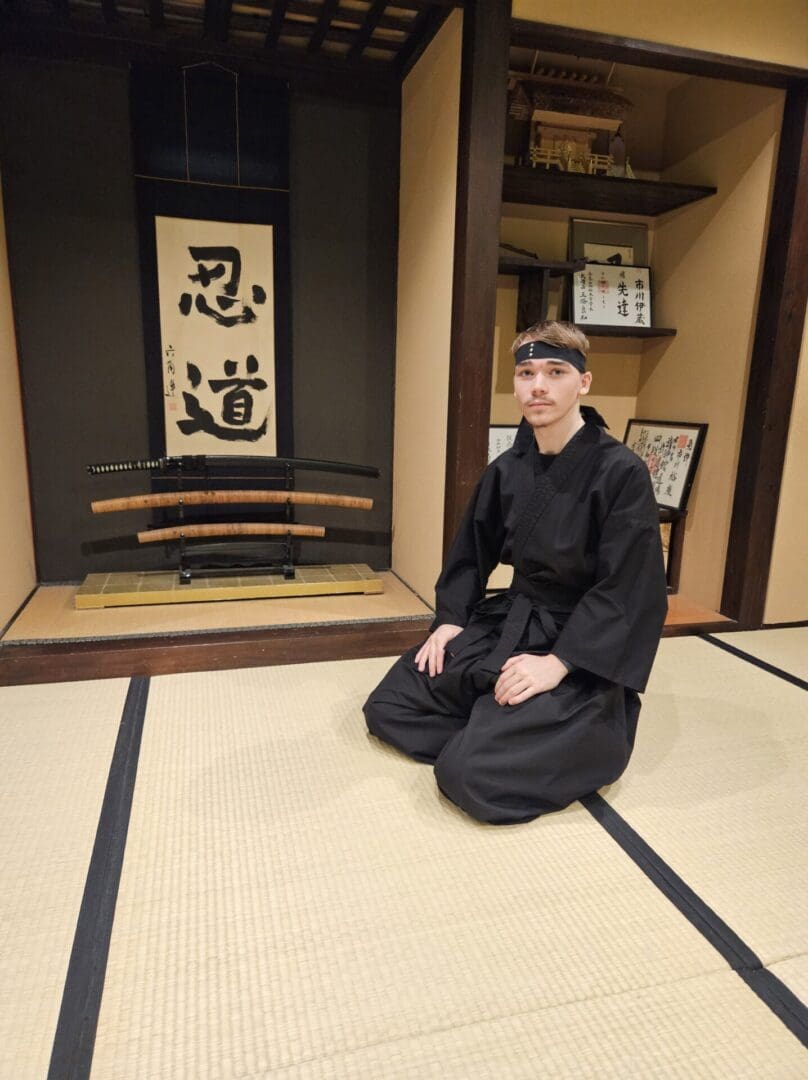
If there’s one thing I like as much as the samurai, it’s the ninja. For as long as I can remember, I’ve always wanted to be the one working from the shadows, unseen but ever-present. The mystique and skills of the ninja have always fascinated me, inspiring me to learn martial arts and immerse myself in their clandestine world. Our first stop in Osaka was a ninja experience, and it promised to be an enlightening and exhilarating adventure.
We began with ninja meditation, known as kuji-in (九字印). This ancient practice involves a series of hand gestures and chants designed to focus the mind and spirit, enhancing mental clarity and inner strength. The meditation session set a calm and centred tone for the day, aligning our thoughts and energies with the discipline of the ninja.
Next, we learned the art of ninja walking. This stealthy technique, crucial for moving undetected, emphasised balance, silence, and precision. With each careful step, we practised blending into our surroundings, moving like shadows through the training area.
The session then introduced us to the ninjato, the iconic ninja sword. We explored its uses and learned about the unique square tsuba (hand guard), which provides a practical grip and can be used in tight spaces. The sheath of the ninjato, ingeniously designed, serves multiple purposes such as a blowgun or a snorkel, showcasing the resourcefulness of the ninja.
Following this, we delved into the world of shuriken, the famed ninja throwing stars. We learned the different types: the star-shaped shuriken, ideal for creating distractions while escaping, and the bo-shuriken, more suited for direct attacks. Through target practice, we honed our skills in precision and speed, essential for effective use in the field.
The blowgun, another versatile weapon, was next on our list. We received instruction on its use and engaged in target practice, discovering the skill and accuracy required to wield this seemingly simple but deadly tool effectively.
Our experience also included a brief introduction to the kunoichi, the female ninjas. We learned about their unique roles and the specialised weapons they used, gaining a deeper appreciation for their contributions and skills within the ninja tradition.
This immersive ninja experience in Osaka not only fulfilled a lifelong fascination but also provided a profound understanding of the discipline, ingenuity, and versatility that defines the ninja way. It was a perfect blend of history, culture, and hands-on learning, making our journey through Japan even more remarkable.
I ended up only buying a shuriken keychain as a souvenir, primarily because I was uncertain if customs would permit a kunai through. The shuriken keychain, though small, is a tangible reminder of the incredible experience I had and the skills I began to explore. It’s a symbol of my admiration for the ninja and their remarkable prowess.
Next time, however, I am determined to fulfil my dream more fully. I plan to purchase a kunai, a traditional ninja weapon, and bring it back with me. The kunai is not just a weapon but a tool that embodies the versatility and resourcefulness of the ninja. Owning one will be a significant step towards deepening my connection to this ancient art.
With the kunai in hand, I intend to start learning the way of the Ninja, known as Ninjutsu. This comprehensive martial art encompasses not only physical techniques but also mental discipline, strategy, and the philosophy that underpins the ninja way of life. Training in Ninjutsu will allow me to understand the historical and cultural significance of the ninja, as well as to develop the skills that made them legendary.
Embracing Ninjutsu means committing to a path of continuous learning and self-improvement. It involves mastering various aspects of combat, stealth, and survival, as well as cultivating the inner strength and mindfulness that are crucial to the ninja ethos. Through rigorous practice and dedication, I aspire to embody the qualities of a true ninja, moving beyond mere fascination to actual proficiency.
Ultimately, my journey into the world of the ninja is about more than just acquiring skills or collecting artefacts. It’s about immersing myself in a tradition that values discipline, adaptability, and a profound connection to one’s environment. The next time I visit Japan, I will take this crucial step, purchase a kunai, and begin my formal training in Ninjutsu, transforming a lifelong passion into a tangible and enriching pursuit.
Day Four (Thursday):
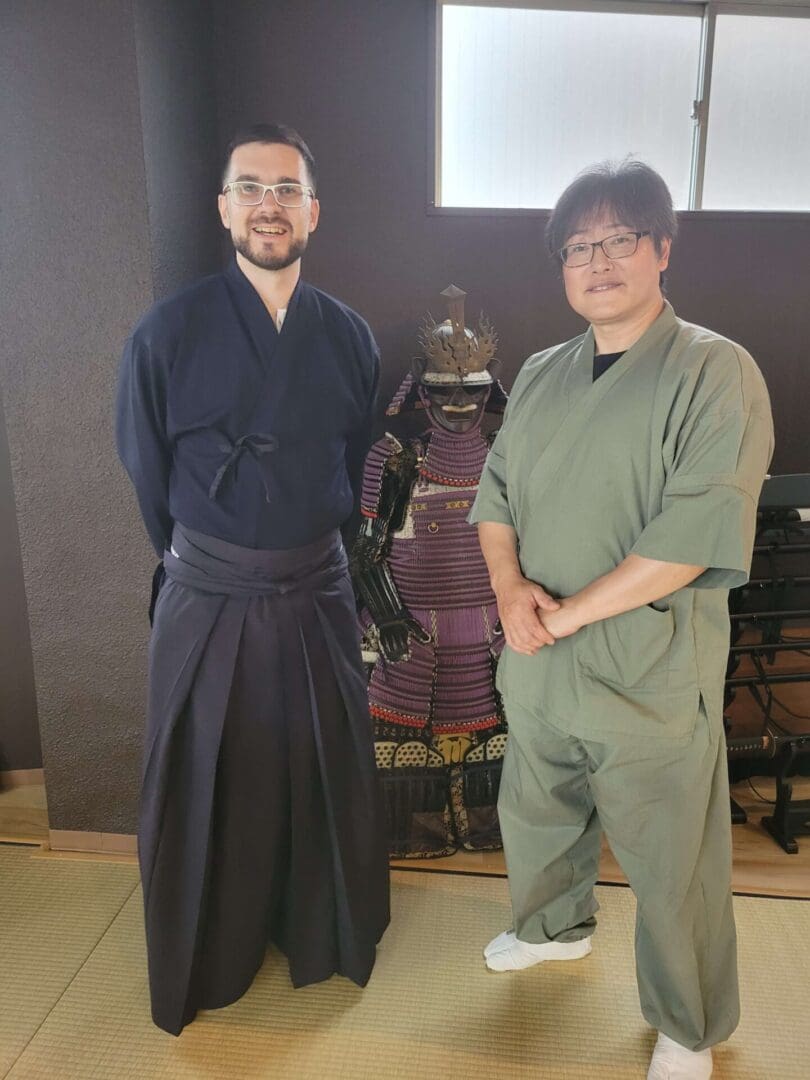

If there’s one thing that captivates me as much as the ninja, it’s the samurai. The noble warrior class of feudal Japan, with its strict code of honour and unparalleled swordsmanship, has always held a special place in my imagination. Our next journey took us deeper into the world of the samurai, specifically to an Iaido training session under the tutelage of the renowned master Isao Machii in Osaka. This experience promised to be both enlightening and exhilarating.
We began our training with a detailed introduction to the philosophy and discipline of Iaido, the art of drawing and cutting with a sword. Isao Machii emphasised the importance of mental clarity, presence of mind, and the seamless unity of movement. This initial lesson set a calm and focused tone for our session, aligning our thoughts with the disciplined spirit of the samurai.
Next, we moved on to learning the fundamental stances and techniques of Iaido. Under Machii’s watchful eye, we practised drawing our swords with precision and fluidity, ensuring that each movement was deliberate and controlled. The elegance of these techniques, coupled with the weight of the katana, made the practice both challenging and deeply rewarding.
As we progressed, Machii introduced us to the various kata, or forms, which are essential to Iaido. Each kata, a choreographed series of movements, represents different combat scenarios and helps develop muscle memory, balance, and timing. We practised these forms repeatedly, striving for perfection in every cut and stance.
The highlight of our training was a demonstration by Isao Machii himself. His mastery of the katana was awe-inspiring, showcasing both incredible speed and impeccable technique. Watching him perform was like witnessing a living embodiment of samurai tradition, and it filled us with a profound respect for the art and its practitioners.
Our session also included a brief history of the samurai and their weapons. We learned about the significance of the katana, the wakizashi, and the tanto, as well as the role these weapons played in the daily lives and battles of the samurai. This historical context enriched our understanding and appreciation of Iaido.
This immersive samurai experience not only fulfilled a lifelong fascination but also provided a profound understanding of the discipline, honour, and skill that defines the samurai way. It was a perfect blend of history, culture, and hands-on learning, making our journey through Japan even more remarkable.
Inspired by this experience, I am determined to continue my training in Iaido. The discipline encompasses not only physical techniques but also mental fortitude, strategy, and the philosophy that underpins the samurai way of life. Training in Iaido will allow me to understand the historical and cultural significance of the samurai, as well as to develop the skills that made them legendary.
Embracing Iaido means committing to a path of continuous learning and self-improvement. It involves mastering various aspects of combat and mindfulness, cultivating the inner strength and respect that are crucial to the samurai ethos. Through rigorous practice and dedication, I aspire to embody the qualities of a true samurai, moving beyond mere fascination to actual proficiency.
Ultimately, my journey into the world of the samurai is about more than just acquiring skills or collecting artifacts. It’s about immersing myself in a tradition that values discipline, honour, and a profound connection to one’s spirit. The next time I visit Japan, I will take this crucial step, continue my training in Iaido, and deepen my understanding of the samurai, transforming a lifelong passion into a tangible and enriching pursuit.
Day Five (Friday):
Kendo Experience:
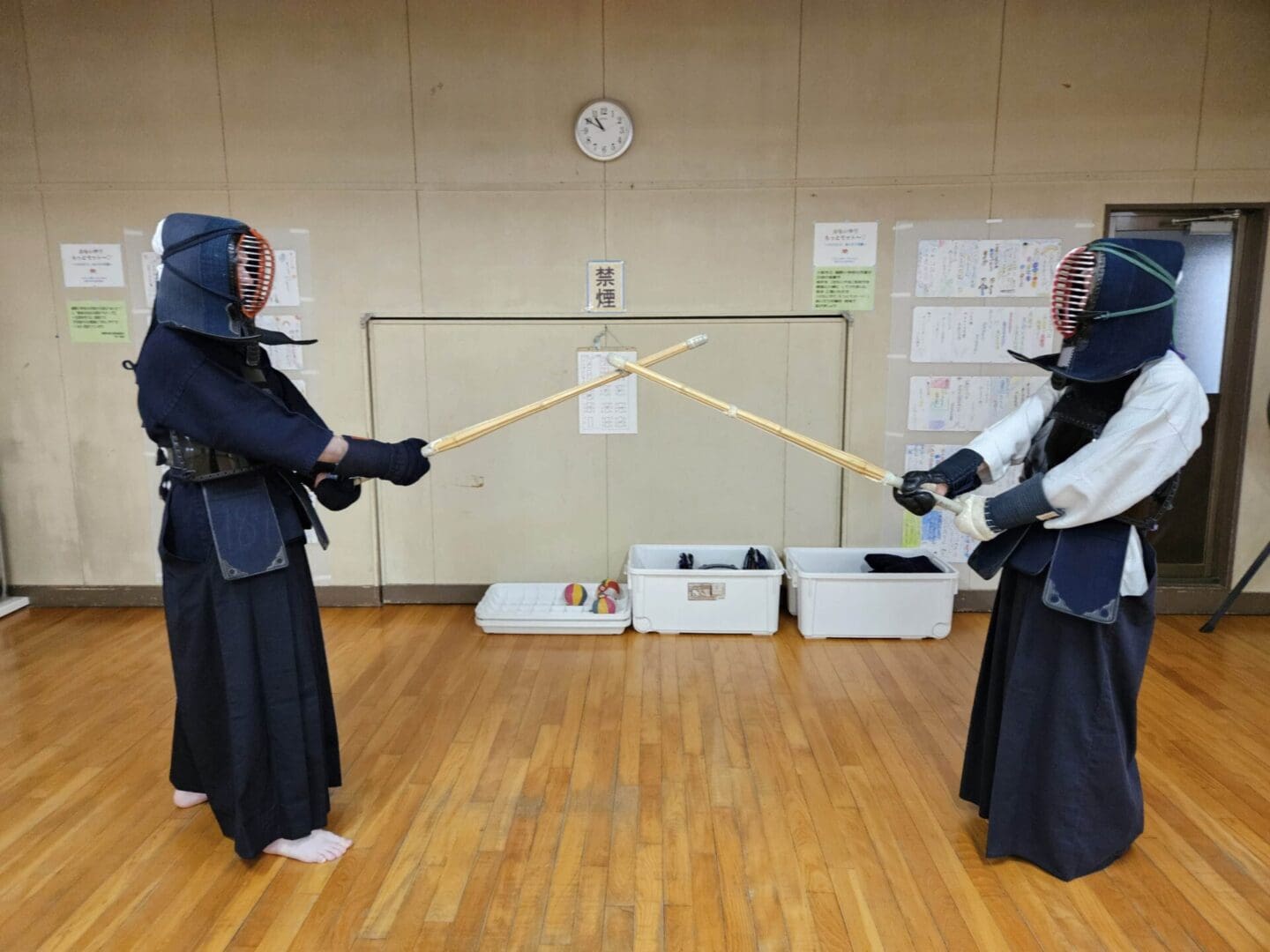

Our exploration of the samurai way continued with an immersive Kendo experience, offering us a profound dive into the world of Japanese swordsmanship. Kendo, often referred to as “the way of the sword,” combines martial arts with deep-rooted cultural and spiritual elements. This experience was not only about learning combat techniques but also about embracing the philosophy and discipline that define Kendo.
We began the session with a period of meditation, a vital practice in Kendo. This moment of quiet reflection allowed us to centre ourselves, clear our minds, and prepare mentally for the rigorous training ahead. The meditation set a tone of focus and respect, aligning our spirits with the core values of Kendo: respect, honour, and perseverance.
Next, we were introduced to the basic kamae (stance), the foundation of all Kendo techniques. The sensei emphasised the importance of a strong, stable stance, which is crucial for both defence and attack. We practised assuming and holding this stance, feeling the balance and readiness it provided, and understanding its significance in maintaining control and power during combat.
With our stances perfected, we moved on to learning the primary strikes of Kendo. The first strike we practised was the men, aimed at the head. This required precision and speed, along with a powerful shout, or kiai, to project our energy and intention. Each strike was a blend of physical force and mental focus, embodying the spirit of Kendo.
We then learned the do strike, targeting the body. This strike required us to aim for the side of the opponent’s torso, and it taught us the importance of timing and accuracy. The sensei guided us through the correct form, ensuring we understood how to deliver a powerful and effective blow while maintaining our balance and stance.
The final strike we practised was the kote, aimed at the wrist. This strike was particularly challenging, requiring both precision and speed. We practised repeatedly, honing our ability to strike swiftly and accurately, understanding that in Kendo, every movement must be deliberate and purposeful.
Throughout the training, the sensei provided invaluable insights into the philosophy and etiquette of Kendo. We learned that Kendo is not just about defeating an opponent but also about cultivating a strong character, discipline, and a respectful attitude. Each strike and movement was a step toward mastering not just the physical techniques, but also the mental and spiritual aspects of the art.
This Kendo experience was a powerful addition to our journey into the world of the samurai. It reinforced the principles of discipline, respect, and self-improvement that are central to the samurai ethos. By learning the basic stances and strikes, and through the meditative practices, we gained a deeper appreciation for the art of Kendo and its enduring significance in Japanese culture.
Our time spent training in Kendo not only enriched our understanding of samurai swordsmanship but also instilled in us a greater sense of focus and inner strength. It was a perfect complement to our previous experiences, deepening our connection to the samurai way and enhancing our overall journey through Japan. This hands-on experience left us inspired and motivated to continue exploring and practising the timeless arts of the samurai.
Osaka Castle:
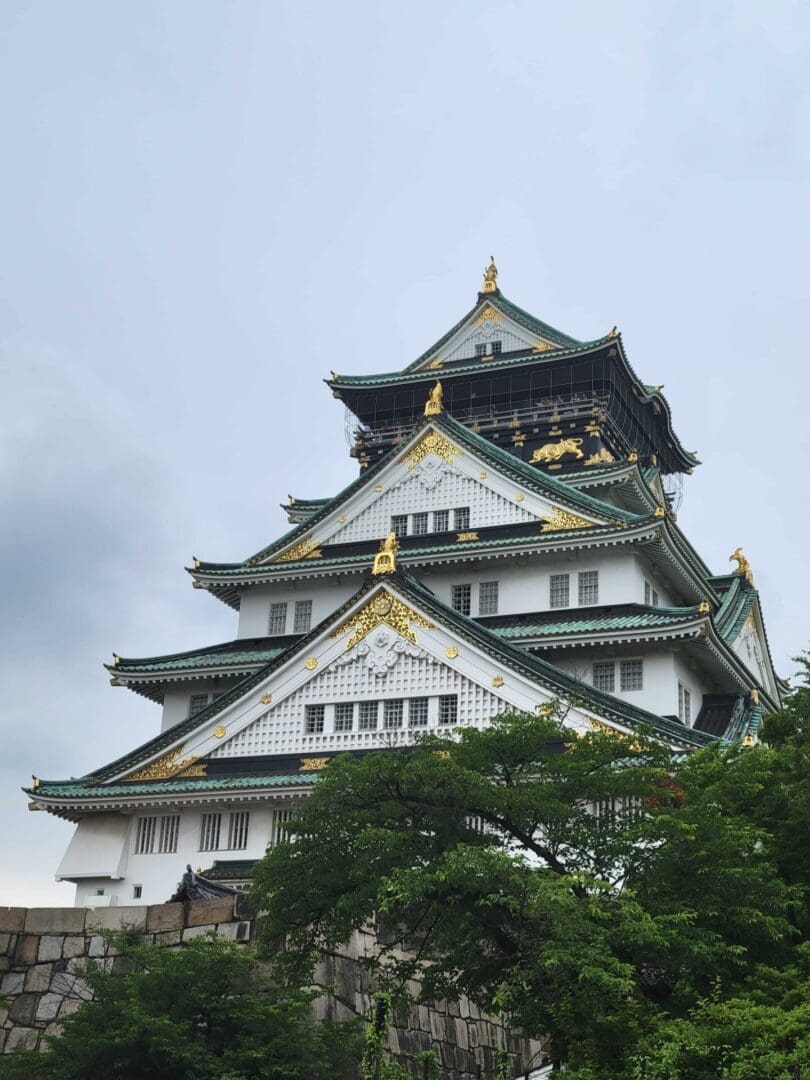
Our visit to Osaka Castle was a captivating journey into Japan’s rich history, offering a profound glimpse into the legacy of the samurai and the tumultuous periods they lived through. As we approached the towering structure, its grandeur and architectural elegance left us in awe. Inside, we delved into the storied past of the castle, learning about its construction in the late 16th century by the famous warlord Toyotomi Hideyoshi. The exhibits and displays provided detailed accounts of the pivotal Battle of Osaka, where the Tokugawa shogunate laid siege to the castle, leading to the fall of the Toyotomi clan and the establishment of the Tokugawa era. Walking through the castle’s halls and grounds, we imagined the fierce battles that once took place there, feeling a deep connection to the samurai warriors who fought valiantly within its walls. The experience was both educational and emotionally stirring, enriching our understanding of Japan’s feudal history and the enduring spirit of the samurai.
Buddhist Temple:

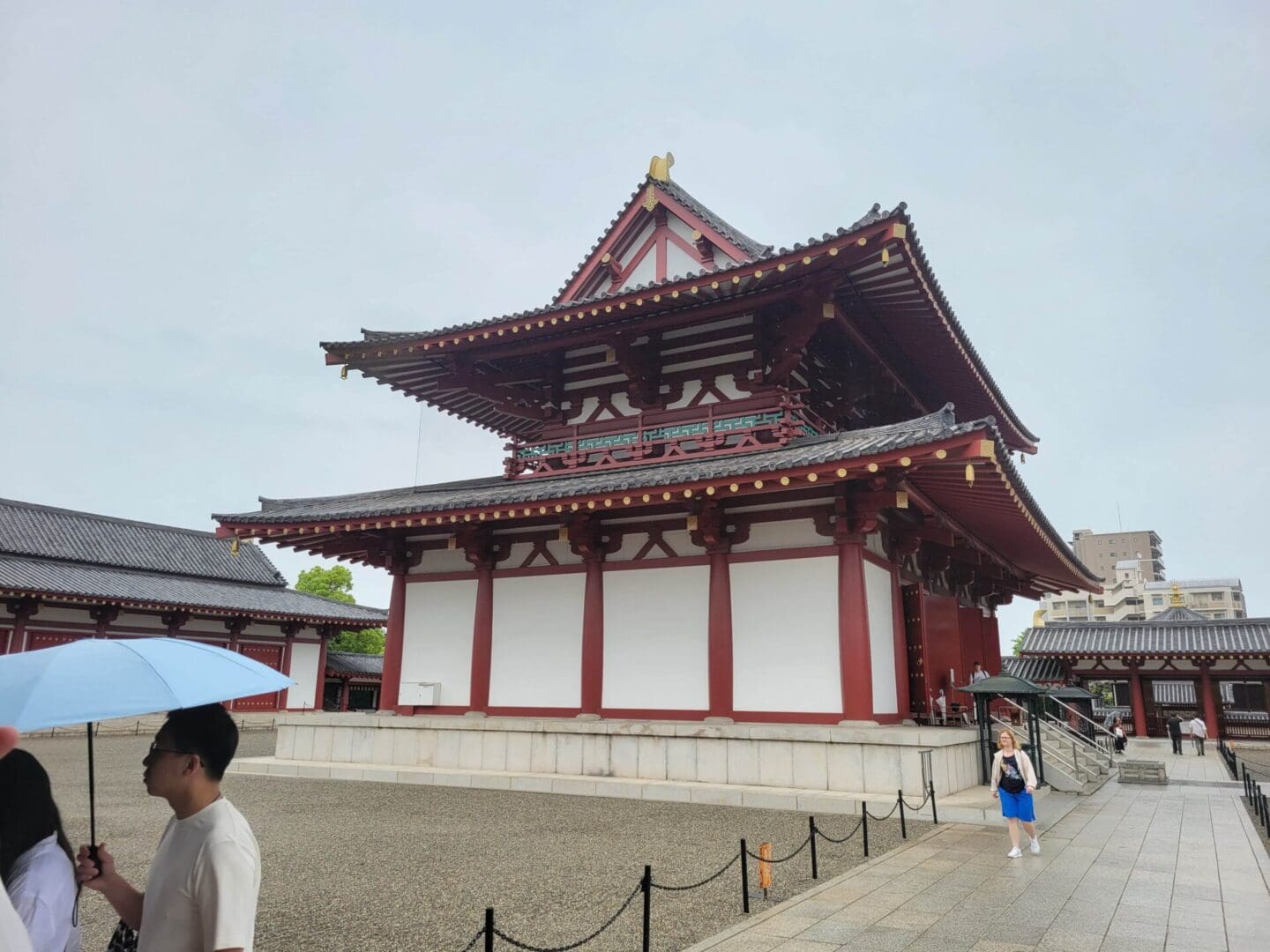
Our visit to a Buddhist temple was a serene and enlightening experience, immersing us in the tranquillity and spiritual depth of Japanese culture. As we approached the temple, we were immediately struck by its stunning architecture. The temple’s design, characterized by intricate wooden carvings, elegant pagodas, and serene gardens, exuded a timeless beauty that invited contemplation and reverence. Each element of the temple seemed to be thoughtfully placed, creating a harmonious blend of natural and man-made beauty.
The overall “zen” atmosphere of the temple was palpable. The gentle rustling of leaves, the soft murmur of a nearby stream, and the distant sound of chanting monks created a sensory backdrop that was both calming and invigorating. The air was filled with the subtle fragrance of incense, adding to the meditative ambience.
As we walked through the temple grounds, we felt a profound sense of peace and introspection. The carefully manicured gardens, with their meticulously raked gravel and artfully arranged rocks, embodied the principles of Zen Buddhism, emphasizing simplicity, balance, and mindfulness. These spaces provided a perfect setting for quiet reflection and meditation.
Inside the temple, we were welcomed by the warm glow of candles and the serene presence of Buddha statues. The monks, dressed in traditional robes, moved gracefully through their rituals, their movements deliberate and imbued with a sense of purpose. Observing their practices, we gained a deeper appreciation for the spiritual discipline and dedication that define the Buddhist way of life.
Participating in a guided meditation session further enriched our experience. Under the guidance of a seasoned monk, we learned to focus on our breath, quiet our minds, and embrace the present moment. This practice of mindfulness allowed us to connect more deeply with ourselves and the peaceful environment around us.
Our time at the Buddhist temple was a beautiful reminder of the importance of inner peace and spiritual balance. The serene atmosphere and breathtaking architecture provided a sanctuary from the hustle and bustle of daily life, offering us a chance to slow down, reflect, and find harmony within. This experience left a lasting impression on us, highlighting the profound beauty and wisdom embedded in Japanese spiritual traditions.
Day Six (Saturday):
Our knife-making experience with a traditional swordsmith was an extraordinary dive into the meticulous craft and profound history of Japanese blades. The day began with an insightful history lesson on the katana, Japan’s most revered sword. We learned about its evolution, the significance it held for samurai, and the intricate process of its creation. The swordsmith taught us how to identify the era and origin of a sword based on the length, curve, and unique grain patterns in the metal, a skill that requires a deep appreciation for the subtleties of this ancient art.
Under the expert guidance of the swordsmith, my dad and I embarked on crafting a medium-sized knife. We learned to heat, hammer, and fold the steel, mirroring the techniques used by traditional swordsmiths for centuries. The rhythmic clang of metal on metal and the intense heat of the forge created an immersive and almost meditative atmosphere, connecting us to the long lineage of artisans who perfected these skills.
As we shaped and sharpened our blade, the swordsmith shared stories and techniques, enriching our understanding of the dedication and precision required in this craft. The culmination of our efforts was a beautifully crafted knife, personalised with our surname in kanji engraved on the blade. This tangible result of our hard work and collaboration was not just a functional tool but a meaningful keepsake symbolising our shared experience and the rich cultural heritage we had explored together.
Day Seven (Sunday):
Our adventure took a lively turn with a day dedicated to exploring the vibrant shopping scene in Tokyo. We began our journey in the bustling district of Shibuya, famous for its eclectic mix of shops and entertainment. Our first stop was the iconic Shibuya Crossing, where we marvelled at the organised chaos of countless people crossing the street from all directions. The energy and pace of this famous intersection were exhilarating, perfectly capturing the essence of urban Tokyo.
From there, we ventured into a series of anime stores, each packed with an incredible array of merchandise from popular series. The shelves were filled with everything from action figures and posters to rare collectables, making it a paradise for any anime enthusiast. We spent hours browsing through the latest manga, admiring detailed figurines, and soaking in the vibrant atmosphere that celebrates Japan’s unique pop culture.
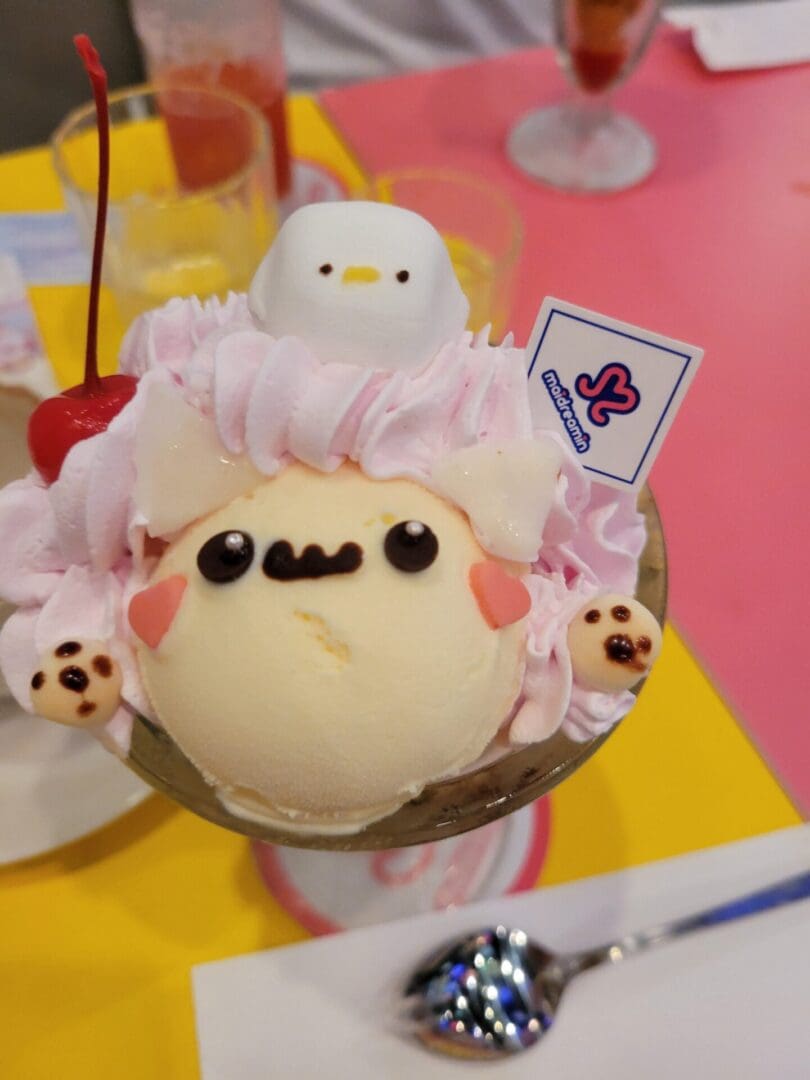
One Of The Maid Cafe Desserts
Our exploration then led us to a maid cafe, a uniquely Japanese experience that adds a whimsical twist to dining. The maids, dressed in charming, elaborate outfits, welcomed us with cheerful greetings and performed playful rituals as they served our food. It was a delightful and entertaining break from shopping, offering a glimpse into a subculture that is both quirky and fascinating.
This day of shopping and cultural immersion in Shibuya not only allowed us to gather souvenirs and indulge in our love for anime but also provided a deeper appreciation for the dynamic and multifaceted nature of Tokyo. Each experience, from the bustling crossing to the themed cafes, contributed to our understanding of the city’s contemporary culture and left us with unforgettable memories.


